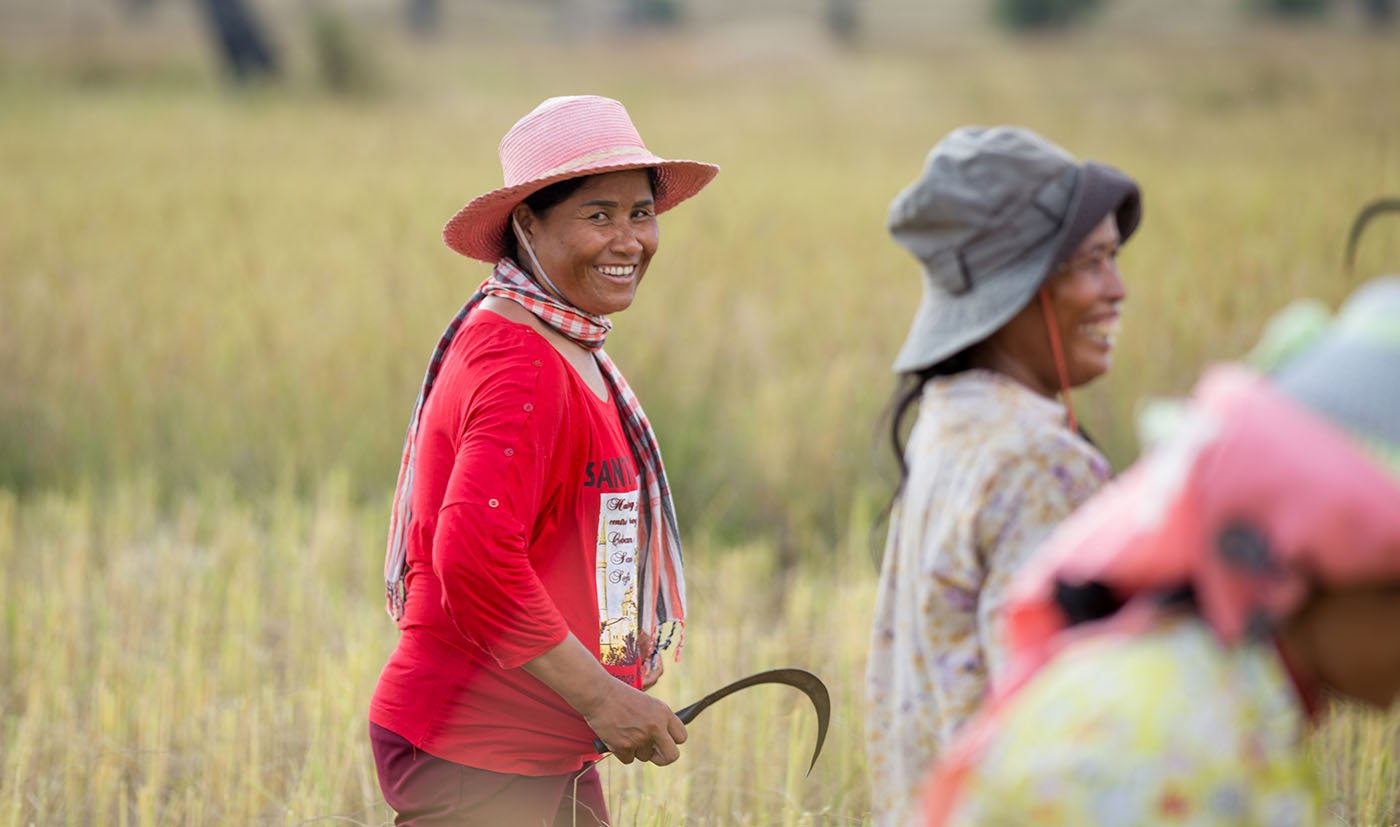In Cambodia, Oxfam is using Blockchain technology with rice farmers, exporters, and a rice cake maker in Europe to help poor farmers get a better deal.
Rice farming in Cambodia is a risky business. When farmers plant their rice, it’s hard for them to predict what price they could possibly get after their harvest. The poorest farmers have no buyers lined up, nor do they have mills to process their grain or vehicles to take it to a market. All they can do is sell their rice to anyone who happens by with a truck, usually at a low price, and hope they can pay back their loans.
Farmers also contend with droughts, floods, high costs for seeds and fertilizer and tools, as well as fluctuating global prices. It’s all beyond their control.
“We see small-scale rice farmers struggling. The prices are unstable and the farmers are vulnerable,” explains Lim Solinn, Oxfam’s Country Director in Cambodia. “If farmers grow a surplus, it drives down the price and the farmers can’t make a profit.”
Rice farming employs three million of Cambodia’s 15 million people, and accounts for 25 percent of the economy. Cambodian rice farmers are now exporting about 9.9 million tons, which is nearly twice what the country consumes. It’s a vital part of Cambodia’s economy, but the average monthly income for rice farmers is only about $108.
In Cambodia, Oxfam is testing an idea that could help 50 farmers in an organic cooperative called Reaksmey Lekkompos Kaksekor to make a deal with exporter AMRU Rice. AMRU cuts out all the middlemen and sells the rice to Sano Rice in the Netherlands, which will make rice cakes for supermarkets in Europe. The project is testing whether a contract farming deal using Blockchain technology can be an effective tool to monitor all the parts of the arrangement. The pilot project, called BlocRice, started in 2018.
A digital agreement
The idea starts with a contract. The exporter commits to pay farmers the market price, plus a premium, which guarantees a market for the rice and reduces some of the uncertainties for the farmers. BlocRice creates an accessible database visible to all the participants in the project, a sort of digital “smart contract” that helps farmers negotiate a better price.
"It’s a three-way digital agreement between organic farmers and rice exporters in Cambodia and buyers in the Netherlands,” Solinn, told The Khmer Times newspaper.
Farmers participating in the BlocRice pilot project agreed to provide 100 metric tons of rice. They ended up delivering 92.5 tons, which were shipped in two containers to the Netherlands in late March 2019. “A late-season drought reduced production slightly,” says Phay Cheth, Oxfam’s BlocRice Project Manager.

Farmers can see the Blockchain database using the BlocRice application on a smart phone in order to be better informed about prices and other terms of the contract, which helps them gain some bargaining power. Farmers also add their planting and harvest data, so AMRU Rice and Sano Rice see the anticipated yield.
But the project needs to narrow a technological gap to help farmers access all the data. “Only 10 to 20 percent of the farmers have smart phones,” Cheth says
Additionally, not all the farmers can read and write, or they may lack internet access and a mobile data plan. If BlocRice continues after this initial test, Cheth says there is potential for it to include a more fully developed app with audio to help illiterate farmers, and allow them to update data offline that can be uploaded later when connected to the internet.
Empowering farmers
BlocRice provides more predictable prices and “has more benefits than selling to traders, because the price varies,” says rice farmer Lyvoeung Chum, president of the cooperative. With the BlocRice contract, she says, “the price is stable.”
The farmers participating in BlocRice were paid about $0.24 per kilo, and an additional $.05 premium. The premium worked out to nearly $100 for most of the BlocRice farmers, who each produced an average of just a bit under two tons of white rice.

And some day, Cheth says, the information made available with BlocRice will help connect consumers to the growers in Cambodia. “It’s an ambitious idea, but if we can monitor the market from the small-scale farmer to the end consumer, the consumer can see that their purchase helps small growers and they can feel good that their purchase contributes to fighting poverty.”
